Abstract
The microbial flora of fresh, unsterile, dough products held at refrigeration temperatures was compared with the microbial flora of the same products that had spoiled spontaneously. Various methods based on selective media were used to determine molds, yeasts, and bacteria present. Except for two special cases in which a yeast and Penicillium roqueforti induced spoilage, all of the samples deteriorated because of bacterial growth. A total of 1,132 bacterial isolates was subjected to further classification. In the spoiled products, 92% of the isolates belonged to the Lactobacillaceae. More than one-half of these (53%) belonged to the genus Lactobacillus, and an additional 36% were in the genus Leuconostoc. In the genus Leuconostoc almost all of the strains (94%) were L. mesenteroides. The third most common genus present was Streptococcus, represented by 3% of the total isolates. A preliminary taxonomic study of the microflora of refrigerated dough products revealed none of the isolates to be indicators of fecal contamination and none to be forms known to produce toxins. The highest counts encountered in the moist, fresh products were up to 200 million lactic acid bacteria per g in buttermilk biscuits, with a psychrophilic count as high as 4.8 million. In the spoiled samples, the highest total counts were 820 million in buttermilk biscuits. Mold counts were no higher than 1,800, except in the sample ruined by P. roqueforti where the count was 130,000 mold colonies.
Full text
PDF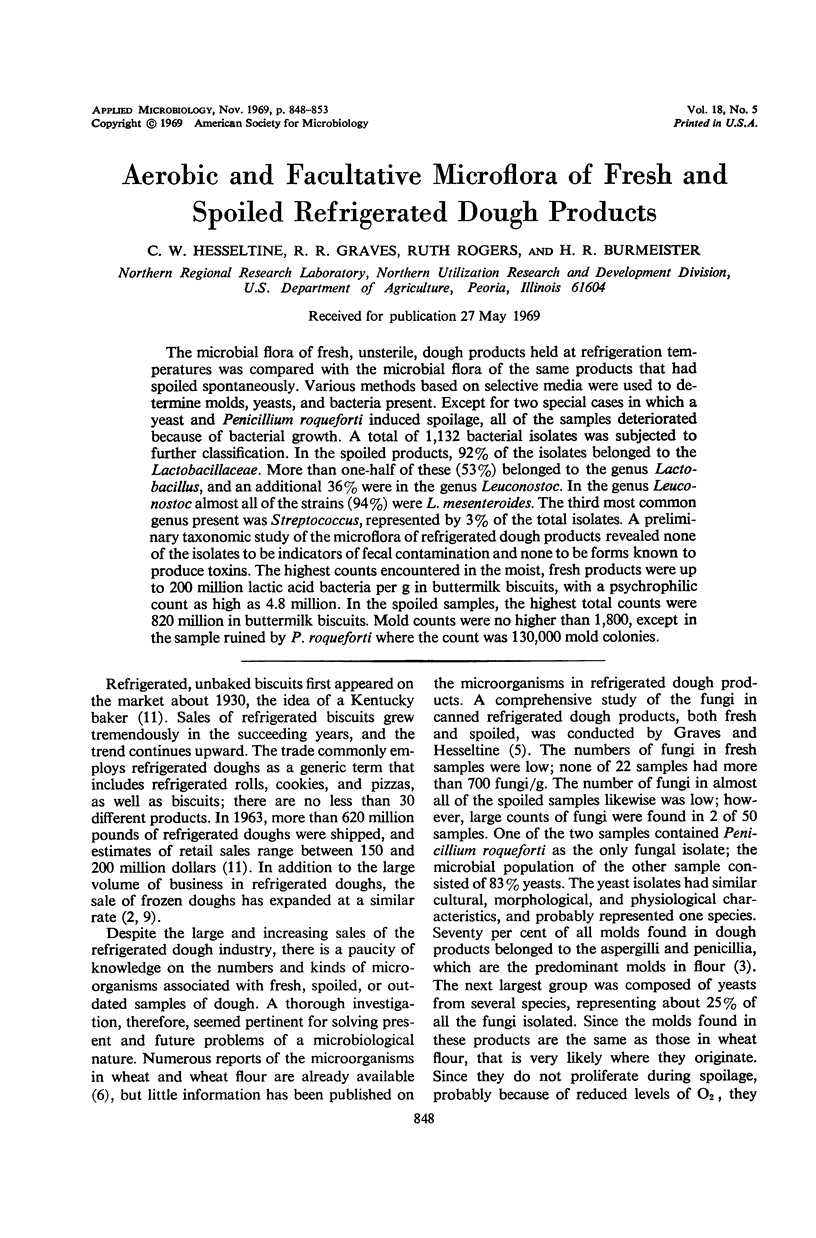
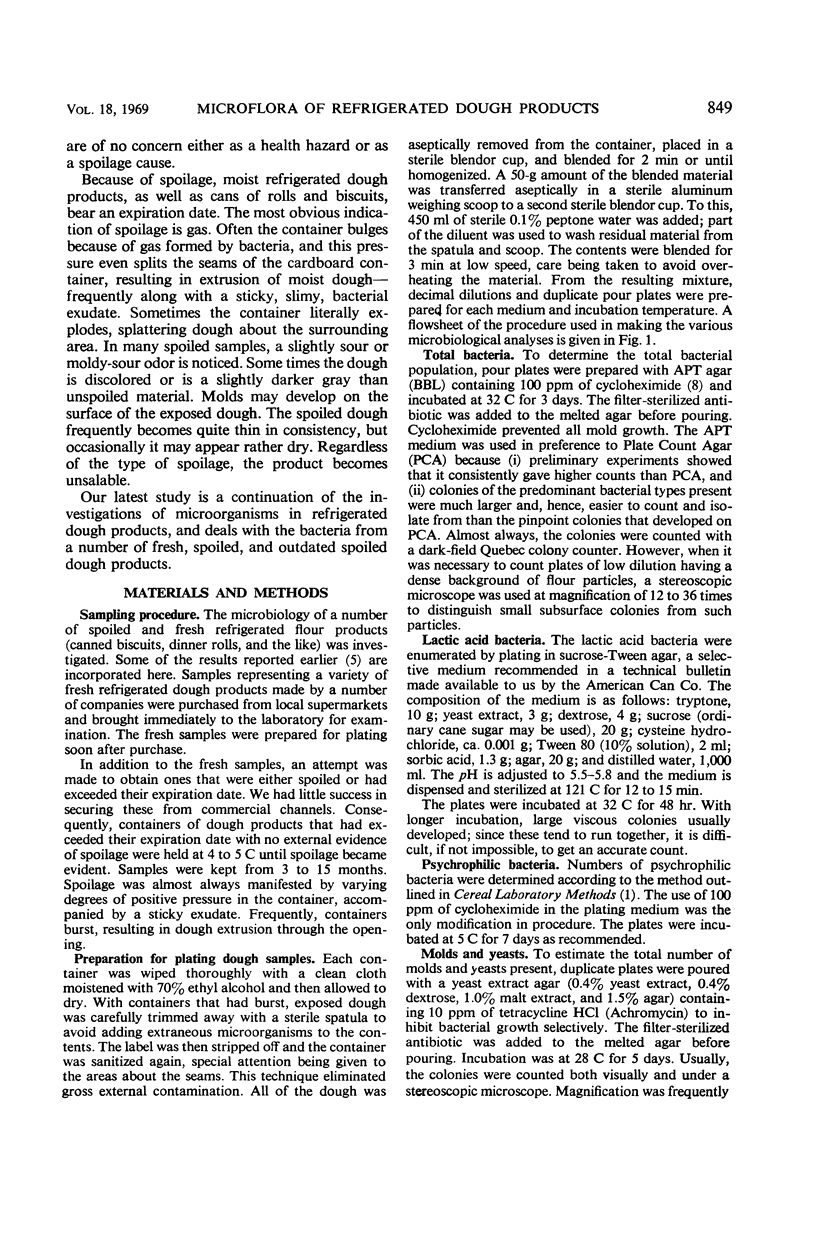
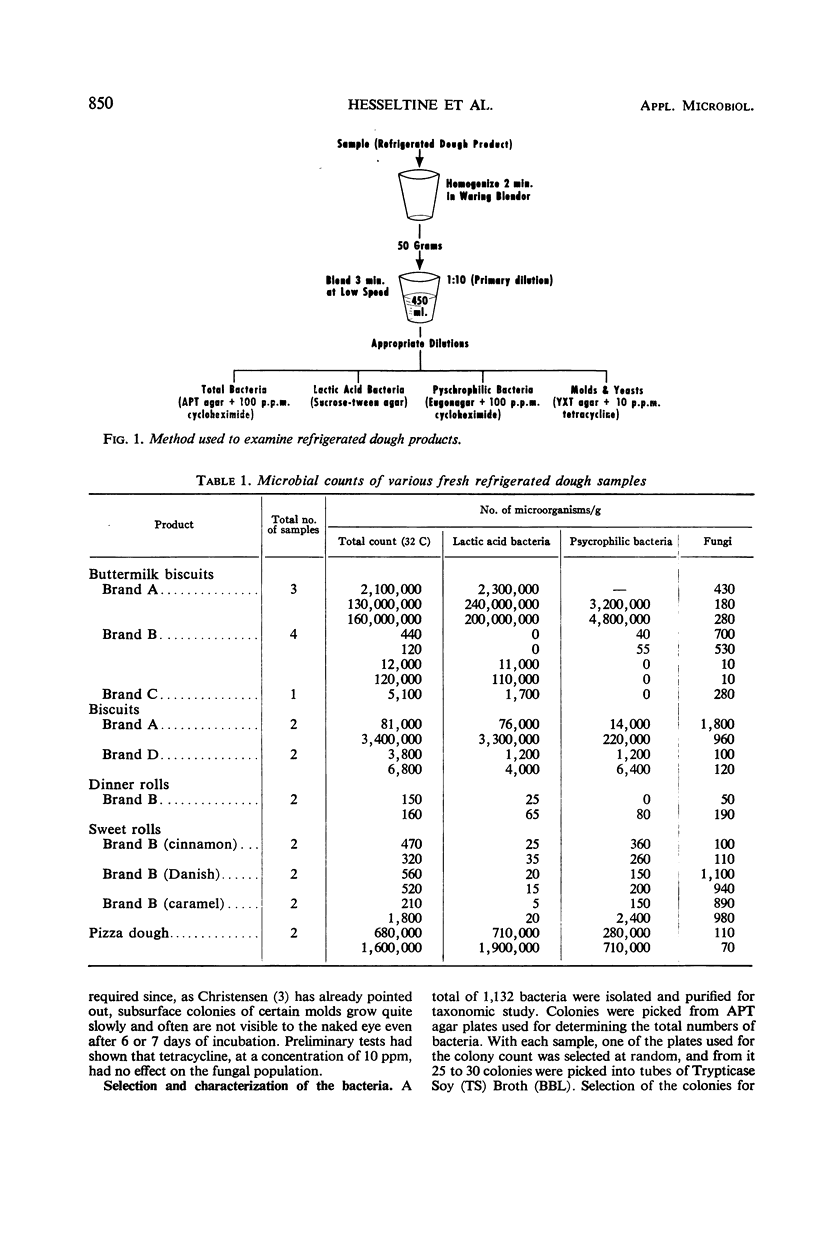
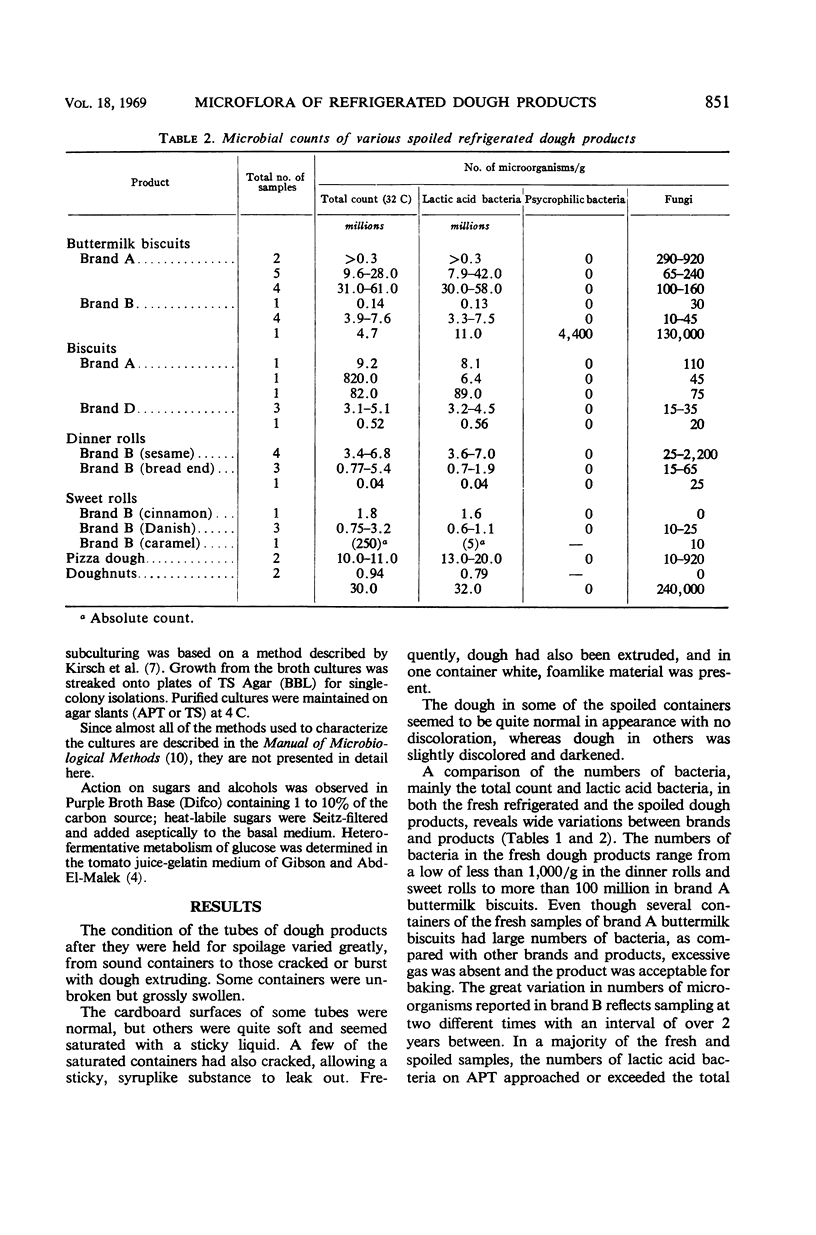
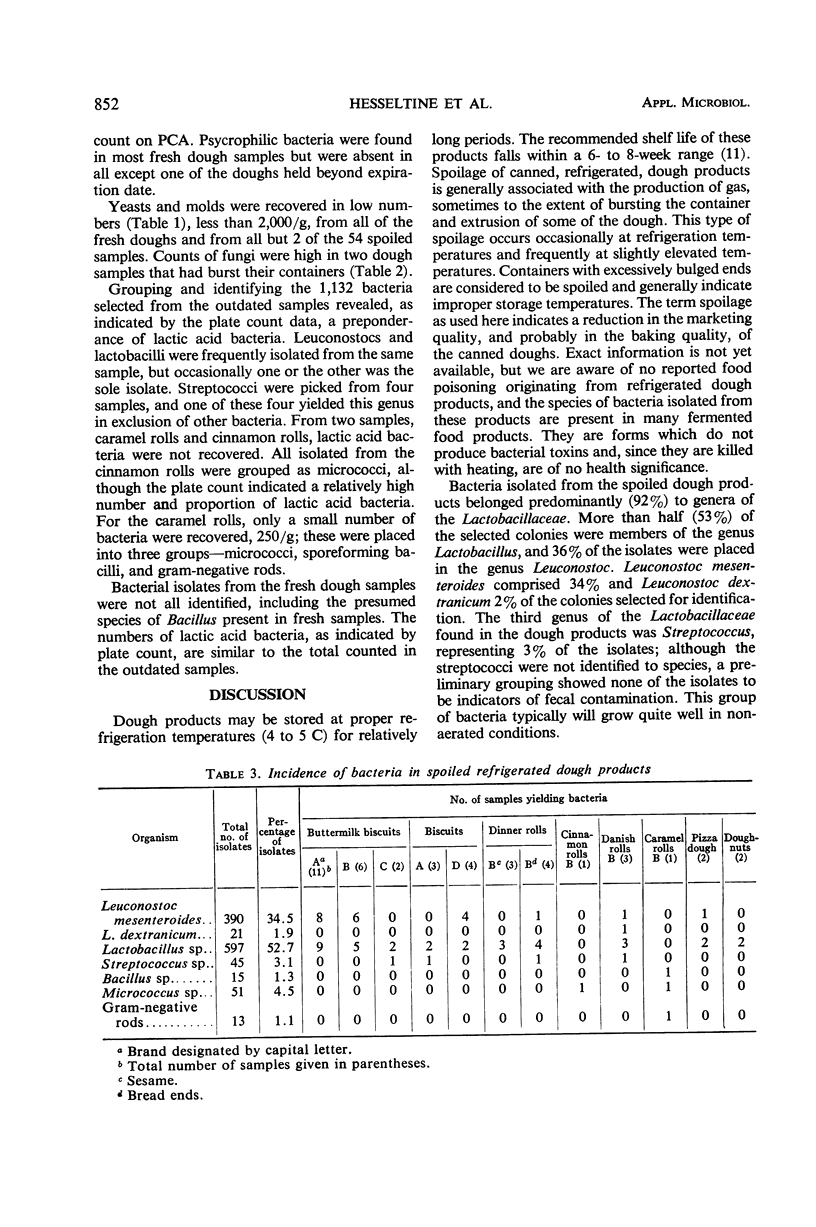
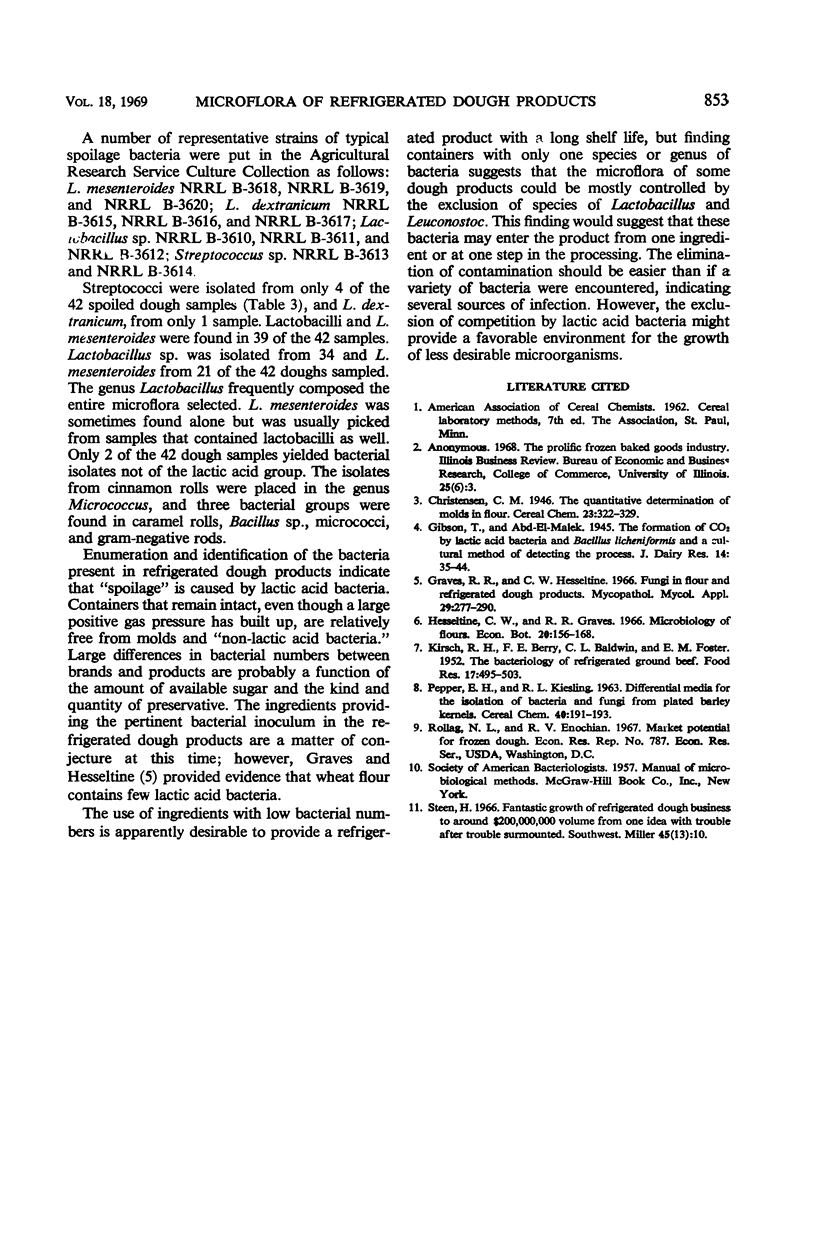
Selected References
These references are in PubMed. This may not be the complete list of references from this article.
- Graves R. R., Hesseltine C. W. Fungi in flour and refrigerated dough products. Mycopathol Mycol Appl. 1966 Aug 30;29(3):277–290. doi: 10.1007/BF02128456. [DOI] [PubMed] [Google Scholar]


